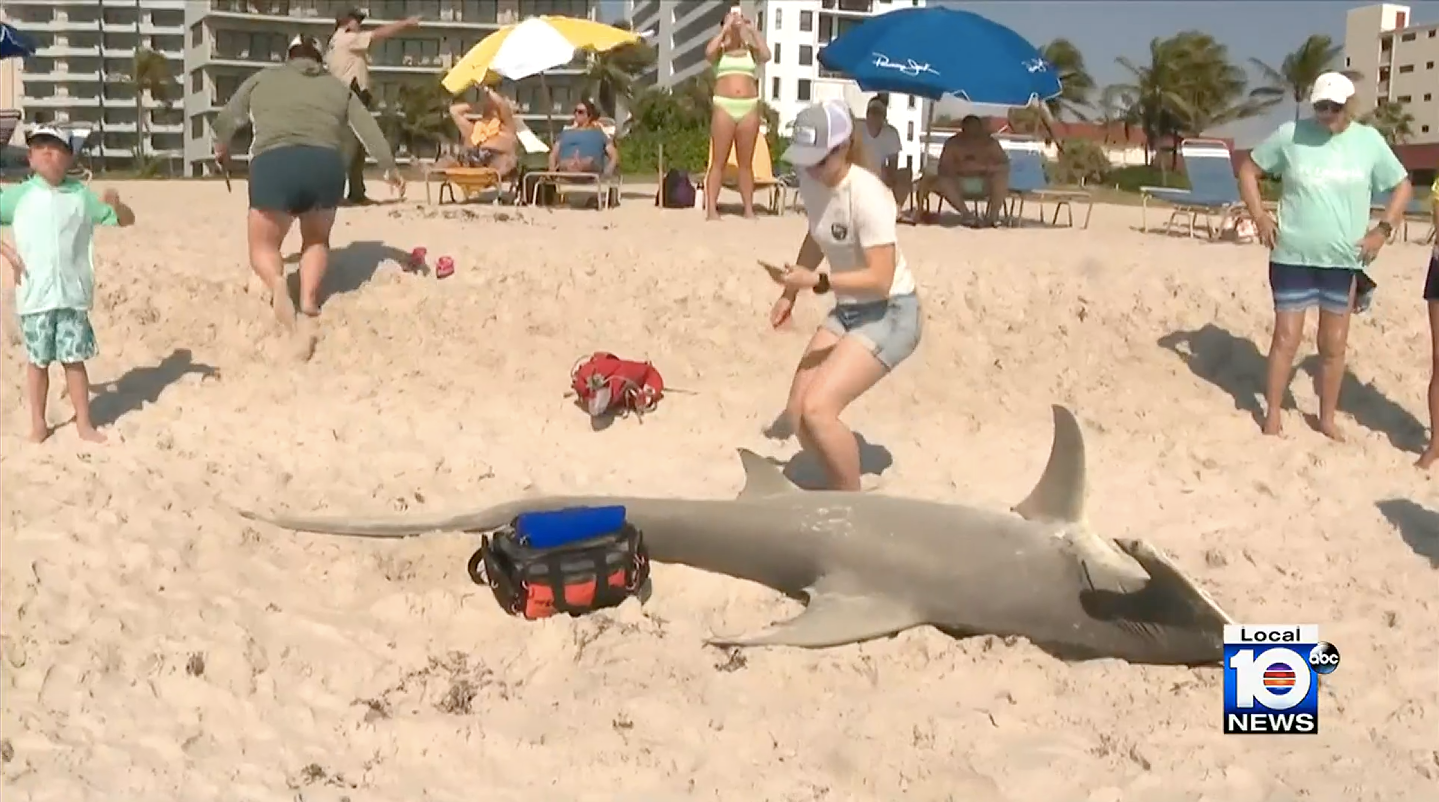11-foot hammerhead shark washes ashore on Florida beach
The 500-pound beached shark was found to be pregnant, scientists later confirmed
Your support helps us to tell the story
From reproductive rights to climate change to Big Tech, The Independent is on the ground when the story is developing. Whether it's investigating the financials of Elon Musk's pro-Trump PAC or producing our latest documentary, 'The A Word', which shines a light on the American women fighting for reproductive rights, we know how important it is to parse out the facts from the messaging.
At such a critical moment in US history, we need reporters on the ground. Your donation allows us to keep sending journalists to speak to both sides of the story.
The Independent is trusted by Americans across the entire political spectrum. And unlike many other quality news outlets, we choose not to lock Americans out of our reporting and analysis with paywalls. We believe quality journalism should be available to everyone, paid for by those who can afford it.
Your support makes all the difference.Beachgoers in south Florida were greeted by a foreboding scene earlier this month when an 11-foot hammerhead shark was discovered washed ashore in the early hours of the morning, Local 10 News reported.
The female shark’s corpse was found at Pompano Beach, located just north of Fort Lauderdale, on 6 April, the news station reported.
Reactions gathered from witnesses on the beach who had the misfortune of stumbling onto the scene featured a mixture of emotions, with some feeling awe while others took to mourning the great animal’s death.
“You never want to see an animal this big laying on the beach,” Kevin Nosal, a resident in the area, told Local 10 News. “This is 11 feet long and over 500 pounds. It’s a female, so it’s always sad when a female passes.”
Great hammerhead sharks were listed by the International Union for the Conservation of Nature as a critically endangered species in 2019, a decision that was motivated by the sharp declines the species has suffered in recent years due to a combination of infrequent breeding (about once every two years), the fin trade and their fragility after being caught and released.
A team of scientists from the American Shark Conservancy who arrived to take samples from the beached hammerhead told the local news station they’d first been alerted to the animal’s presence after receiving a call from the Broward County Sea Turtle Conservation Program, who noted a hook in the creature’s mouth.
The “specific type of hook usually indicates someone was fishing for a large animal like a hammerhead,” said Hannah Medd, founder of the American Shark Conservancy, before adding that hammerheads are “quite susceptible to stress” after being caught by fishermen, even when returned to water.
Catch-and-release of hammerhead sharks is legal in Florida, she noted, so long as the shark isn’t harvested. The stress from the event, however, can lead to a fatal reaction.
“This is a pretty rare event,” Ms Medd said. “We get a call for maybe one to four a year that have washed back up.”

The group continues to advocate for better catch-and-release protocols, but because the creature is “really good at fighting” it can act as a lure for thrill-seeking anglers looking to challenge themselves.
Some of those best practices would in fact cut down on that purportedly exciting “fight time”, such as equipping boats with stronger fishing lures and hooks. This, Ms Medd explained to the outlet, would decrease the chance of injury and death in the species.
After the American Shark Conservancy scientists were able to collect their samples from the shark, which was done discreetly after the female had been moved out of the direct sight of beachgoers, a construction crew dug a hole and buried the creature.
It was later confirmed based on the team’s assessment that the hammerhead weighed 500 pounds and was pregnant.
A recent study found that, despite their dwindling numbers, great hammerheads are the fifth most common shark species in south Florida, with the most common being a nurse shark, followed by the blacktip, lemon and then bull shark.
"They’re globally endangered," wrote Neil Hammerschlag, research associate professor at the University of Miami and co-author of the study. “They’ve undergone very large declines. But off Miami, it’s one of the more common species.”
Some hammerheads, according to the Florida Fish and Wildlife Conservation Commission, can reach up to 18 feet in length and in some cases can live for over 20 years, so long as they’re not targeted by commercial fishing groups for their fins.
In the US, the sale of fins is banned in 14 states including California, New York, Hawaii and Florida but state-level bans do not bar the import of foreign-caught shark products into the country.




Join our commenting forum
Join thought-provoking conversations, follow other Independent readers and see their replies
Comments